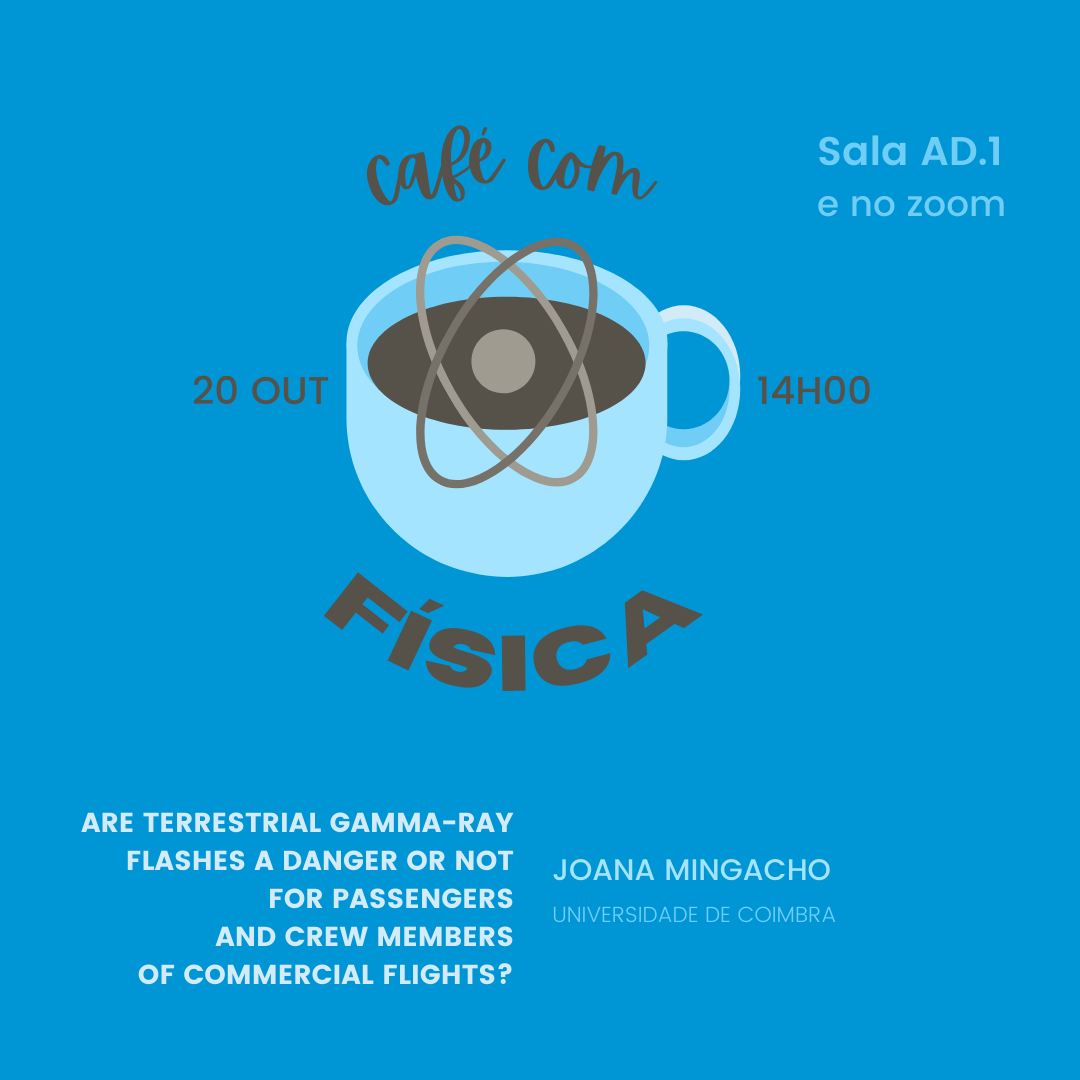Café com Física
Are terrestrial gamma-ray flashes a danger or not for passengers and crew members of commercial flights?
by
→
Portugal
Sala de Conferências (Departamento de Física FCTUC)
Sala de Conferências
Departamento de Física FCTUC
Universidade de Coimbra
Description

Herein, we address a relevant question that has not been answered definitively since Terrestrial Gamma-ray Flashes (TGFs) were first discovered by the Burst and Transient Source Experiment (BATSE) mission in 1994 - are TGFs a danger or not for passengers and crew members of commercial flights? To address this question, we analyzed the main characteristics of the TGFs that have been measured mainly by gamma-ray astrophysics satellite observatories. TGF emissions are generated on top of cumulonimbus clouds, which can exceed 10 km in altitude and reach up to 20 km. These emissions typically lay in the energy range between 100 keV and 100 MeV. The main goal of this work was to estimate the absorbed dose and the effective dose in a human model inside an aircraft cabin, at a typical flight altitude, when irradiated by a TGF emission. Using satellite TGF emissions' data, we implemented a simulation program based on MEGALib toolkit, which allowed us to calculate the total number of triggered events by a representative TGF emission irradiating a commercial aircraft model carrying human beings."
Organised by
Filipe Veloso e Pedro Costa
